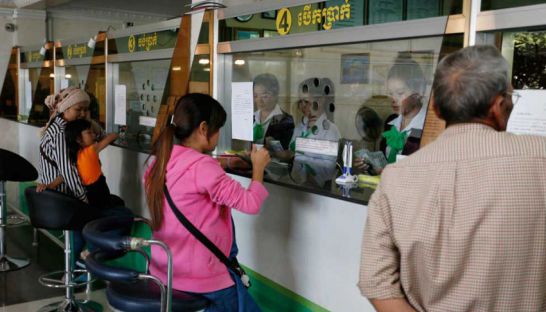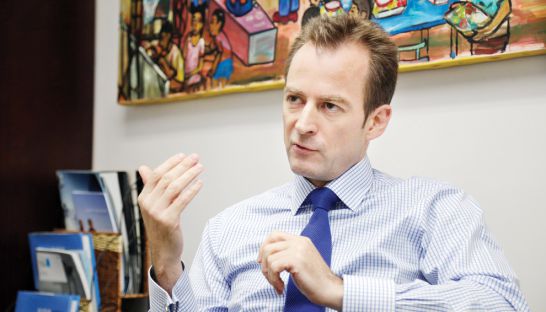Mammoth year in Kingdom’s microfinance sector
Mammoth year in Kingdom’s microfinance sector
Cambodia’s microfinance sector experienced another year of explosive growth, with both lending and deposits surging over 40 per cent in 2015, according to new data by an industry association.

An annual performance sheet released yesterday by the Cambodian Microfinance Association (CMA) showed its membership – comprising 41 MFIs, seven NGOs and Acleda Bank – experienced growth across the board, expanding their branches, staff and activities.
Total issued loans by the association’s MFIs at the end of 2015 reached a record $2.9 billion, a 45 per cent year-on-year increase, with loans provided to 2 million borrowers. The average loan was $1,460.
The figures exclude Acleda Bank, a former MFI that upgraded to a commercial banking license in 2003, yet remains by far the nation’s largest microlender.
The eight Cambodian MFIs licensed to accept deposits also experienced rapid growth. Their total deposits at the end of 2015 topped $1.3 billion, a 45 per cent increase over the previous year, from 1.4 million depositors, according to the data sheet.
CMA chairman Bun Mony said the data reflects the increasing popularity of microfinance, which is helping poor people improve their livelihoods.
“The growth rate of micro-lending is increasing very fast, which is a good sign of poverty elimination and also means people have the capacity to meet the loan criteria,” he said.
However, aggressive growth comes with increased risks.
Oro Financecorp Plc, an MFI that opened in 2014, reported a surge in lending activities last year, more than doubling its loan portfolio to $22.7 million. But the microlender also led all MFIs in terms of non-performing loans (NPLs), writing off over $1.78 million in bad loans last year.
Overall, the average NPL rate of Cambodia’s microfinance sector, while still relatively low at 0.132 per cent, doubled in the past year. In total, Cambodian MFIs excluding Acleda wrote off $3.9 million in bad loans, compared to $1.4 million in 2014.
“There is always risk in business, and lenders need to be skilled and professional, which can the mitigate risk of providing loans,” said Mony.
He added that MFIs must carefully weigh and monitor each borrower’s financial situation, credit history and business plan.
Prasac, the largest MFI in Cambodia, reported a solid growth year in 2015, with its loan portfolio swelling 48 per cent and deposits up by 53 per cent.
According to Say Sony, senior vice president of Prasac, its loan portfolio topped $856 million at the end of 2015, compared to $581 million a year earlier, with 28 per cent more borrowers. Meanwhile, deposits reached $467 million at the end of 2015, compared to $305 million a year earlier.
“Our deposit collection increased because of our convenient services which allow customers to access and transfer their money quick and easily,” Sony said, adding that the bank has 181 branches nationwide and an extensive network of ATMs, as well as internet banking services.














